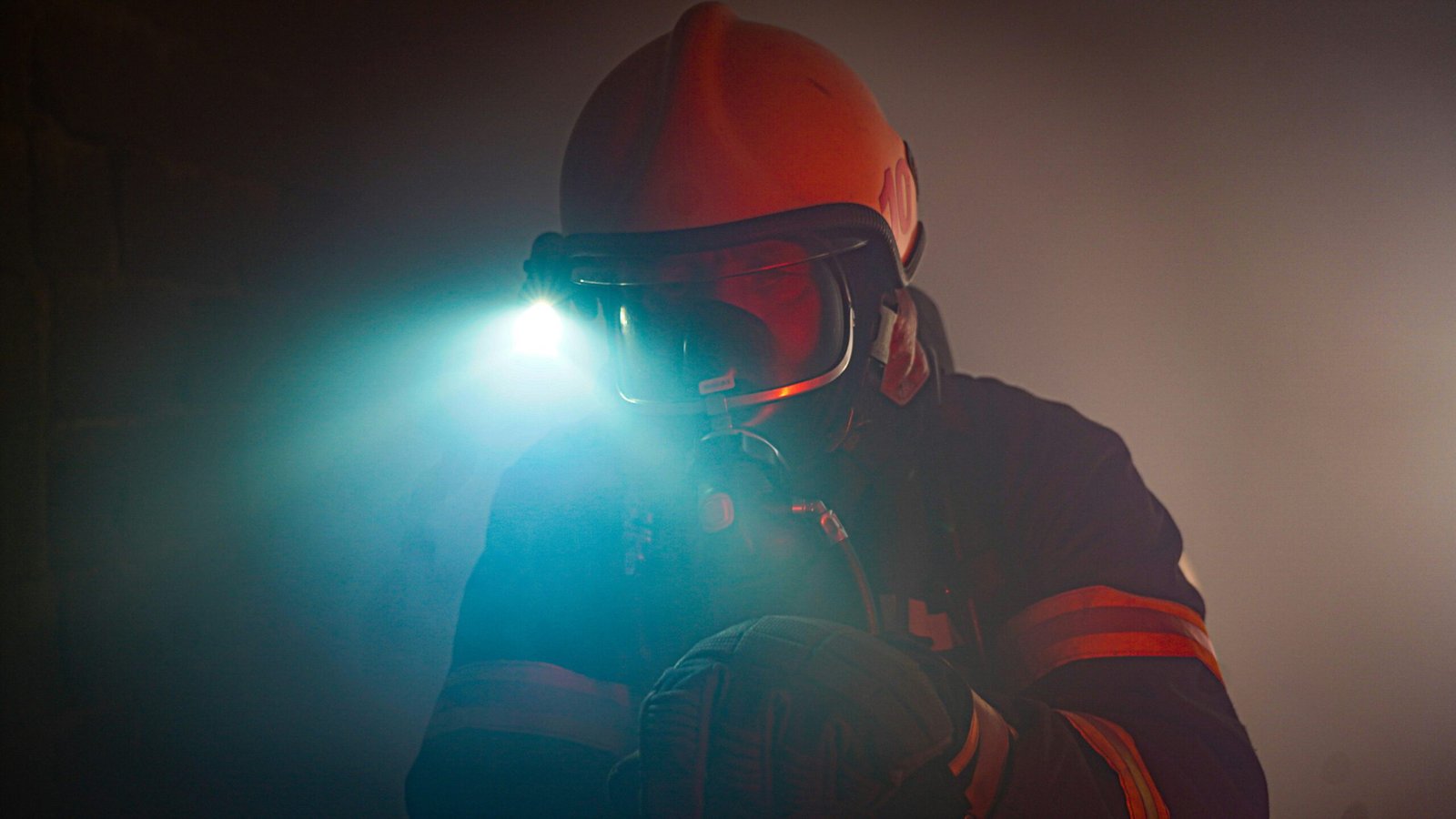Harnessing AI for Disaster Response: Innovations That Save Lives
 Photo by Nejc Soklič on Unsplash
Photo by Nejc Soklič on Unsplash Introduction to AI in Disaster Response
The frequency and severity of natural disasters have been on an upward trajectory, predominantly fueled by the adverse effects of climate change. From hurricanes and earthquakes to wildfires and floods, the range and intensity of these calamities are straining traditional disaster response mechanisms. Conventional methods, reliant on human assessment and reaction, often fall short in terms of efficiency and timeliness, thereby exacerbating the impacts on affected communities.
In this evolving landscape, Artificial Intelligence (AI) has emerged as a beacon of hope, offering the potential to revolutionize disaster response paradigms. The integration of AI into disaster management processes holds promise for enhancing operational accuracy, efficiency, and speed—three critical attributes required for effective response and mitigation. This transformative technology equips responders with advanced tools that can predict, monitor, and manage disasters more effectively than ever before.
AI systems deploy machine learning algorithms and data analytics to process vast amounts of information rapidly. These capabilities enable the real-time analysis of multiple data streams, such as weather patterns, seismic activities, and satellite imagery, thereby providing precise insights and forecasts. In turn, this allows for quicker mobilization of resources and more informed decision-making, which are vital in the wake of a disaster.
Moreover, AI can significantly enhance disaster preparedness by identifying vulnerabilities and designing proactive measures to mitigate risks. By improving the accuracy of early warning systems and automating routine tasks, AI helps in reducing human error and saving crucial time during emergencies.
The role of AI in disaster response is not just confined to post-disaster activities. Throughout the entire disaster management lifecycle—from preparedness and response to recovery and mitigation—AI provides innovative solutions that promise to save lives and build more resilient communities. This blog will delve into the groundbreaking innovations and practical applications of AI that are making notable contributions to disaster response efforts globally.
Predictive Analytics and Early Warning Systems
Artificial intelligence (AI) has revolutionized the realm of predictive analytics, significantly enhancing our ability to forecast and mitigate the impact of natural disasters like hurricanes, earthquakes, and floods. At the core of this technological breakthrough are sophisticated algorithms that meticulously analyze historical data, real-time weather patterns, and myriad other relevant metrics. This analysis facilitates the generation of early warnings, thereby enabling timely interventions that save lives and reduce property damage.
One noteworthy application of AI is in the prediction of hurricanes. Algorithms process vast datasets that include historical weather records and current atmospheric conditions to predict the trajectory and intensity of impending storms. Through predictive analytics, authorities are now able to issue evacuation orders well in advance, providing residents ample time to seek safety. The National Oceanic and Atmospheric Administration (NOAA) has reported a 25% improvement in the accuracy of hurricane forecasts by utilizing AI-driven models, substantiating the efficacy of these innovations.
In the realm of earthquake prediction, AI is progressively making inroads. By leveraging machine learning, seismic data from various geographical regions are continuously analyzed to identify patterns indicative of potential tremors. Researchers from Stanford University have developed an AI system that accurately forecasts earthquakes up to one week in advance with an 80% success rate. This advancement holds profound implications for disaster preparedness in earthquake-prone areas.
Flood forecasting has also greatly benefited from AI. Utilizing real-time data from river sensors, weather forecasts, and historical flood occurrences, AI systems can predict flood events with remarkable precision. In 2019, Google’s AI-based flood forecasting system successfully provided early warnings to the residents of Patna, India, averting significant loss of life and property.
These successful case studies underscore the transformative potential of AI in predictive analytics for disaster response. By providing early warnings, AI not only facilitates prompt evacuation and protective measures but also substantially reduces casualties and property damage. The continued evolution of AI technologies promises to bolster our resilience against the unpredictable fury of natural disasters.
AI-Driven Communication Tools in Crisis
In the realm of disaster response, efficient communication is paramount. AI-driven communication tools, specifically AI-powered chatbots and virtual assistants, are proving to be transformative in delivering critical information during crises. These intelligent systems are designed to provide real-time updates, answer frequently asked questions, and ensure the accurate dissemination of emergency instructions, which are essential for community safety and coordination.
One significant advantage of AI-powered chatbots in disaster response is their ability to operate 24/7 without the need for human intervention. They are programmed to handle a wide range of queries, from locating emergency shelters to providing medical advice. By accessing vast databases of information, these chatbots can instantly respond to queries with precise and updated details, ensuring that affected communities receive the information they need promptly. For instance, during Hurricane Harvey, the Red Cross deployed a chatbot to assist victims by offering updates on shelter locations and resources, facilitating efficient aid distribution.
Moreover, virtual assistants equipped with natural language processing capabilities can enhance communication by interpreting and replying in multiple languages, thus breaking down barriers in multilingual communities. These tools can send real-time alerts and notifications, ensuring that residents are informed about evolving situations, such as evacuation orders or changes in weather conditions. This capability was notably utilized during the Australian bushfires, where chatbots provided timely warnings and evacuation routes to residents, significantly aiding in their safety.
The deployment of AI-driven communication tools also extends to social media monitoring, where they can identify and relay important disaster-related information through platforms widely used by the public. By analyzing vast amounts of data, these tools can detect patterns and predict areas of need, ensuring that emergency services can allocate resources more effectively. For example, during the COVID-19 pandemic, AI chatbots on platforms like Facebook and WhatsApp became crucial in disseminating public health information and answering widespread queries about the virus.
In essence, the integration of AI in crisis communication embodies a leap forward in ensuring life-saving information reaches those in need swiftly and accurately. These innovations are not only enhancing responsiveness during emergencies but are also fostering a more connected and informed global community.
Optimized Resource Allocation and Management
Artificial Intelligence (AI) plays a crucial role in optimizing resource allocation and management during disaster response. Traditional methods of distributing medical supplies, food, water, and rescue teams often suffer from inefficiencies and delays, impacting the effectiveness of relief efforts. However, advanced AI algorithms have the power to transform these processes significantly.
AI systems can analyze the extent of disaster-affected areas by integrating data from various sources, such as satellite imagery, social media updates, and on-the-ground sensors. By assessing the severity and urgency in real-time, these intelligent systems prioritize regions requiring immediate attention. This analytical capability facilitates the timely distribution of essential resources, ensuring they reach the most vulnerable populations quickly.
One of the key advantages of employing AI in disaster response is its ability to reduce logistical bottlenecks. AI-driven models can forecast global supply chain disruptions and provide more accurate and actionable insights. This enables organizations to plan and execute logistics with increased precision, coordinating the transportation of supplies to avoid delays and shortages.
Moreover, the efficiency of rescue operations is significantly enhanced. AI platforms can dynamically dispatch emergency response teams based on the evolving needs of affected areas. By continuously analyzing data, these systems adjust resource distribution routes and schedules, ensuring that rescue efforts are both timely and effective, thereby saving more lives.
The integration of AI into disaster response strategies not only amplifies the overall response speed but also improves effectiveness. For example, during earthquakes or floods, AI can predict the areas most likely to require immediate attention, enabling prioritization that is otherwise challenging. This organized approach ensures all critical requirements are met efficiently, reducing the time inhabitants spend without basic amenities and essential services.
Overall, AI-driven resource allocation and management systems showcase unparalleled benefits. By minimizing delays, reducing logistical complications, and enhancing response accuracy, these innovations ensure that disaster-stricken areas receive the support they urgently need, ultimately resulting in better-managed crisis responses.
Drones and Robotics in Search and Rescue Operations
In recent years, the deployment of AI-powered drones and robots has revolutionized search and rescue operations, significantly enhancing their efficiency and success rates. These advanced technologies can navigate challenging terrains and access areas that are often unreachable for human responders, thereby extending the reach and scope of rescue missions. By harnessing artificial intelligence, drones and robots can identify survivors through heat signatures, making it possible to locate people in areas hidden from the human eye or obscured by debris.
Drones, for example, are equipped with thermal imaging cameras that detect and interpret heat patterns, allowing them to pinpoint the presence of life even in dense forests or crumbled structures. Additionally, AI enables these drones to analyze real-time data and generate maps that provide critical situational awareness for rescue teams on the ground. This kind of aerial assistance is invaluable during natural disasters such as earthquakes, floods, and hurricanes where time is of the essence and swift action can make a significant difference in survival outcomes. Advanced path optimization and obstacle avoidance algorithms further enhance drone efficiency, ensuring they can operate in dynamic and hazardous environments without collision.
Robotic technology complements drone operations by tackling ground-based challenges. AI-powered robots are designed to traverse rugged landscapes and enter confined spaces. These robots come equipped with sensors and cameras that relay live images and environmental data back to command centers, aiding in the decision-making process for rescue planning. A notable real-world application involves robots used during the Fukushima nuclear disaster, where traditional human efforts were hindered by radiation levels. AI-driven robots were able to navigate the contaminated zones, delivering crucial information and supplies, which significantly contributed to the overall rescue efforts.
Machine learning plays an integral role in enhancing the functionality of drones and robots in search and rescue missions. It facilitates path optimization, whereby AI algorithms predict the most efficient routes to reach survivors while evading obstacles. Furthermore, continuous data collection and analysis enable these AI systems to learn and improve their performance over time, making future rescue operations even more effective.
The integration of AI in drones and robotics is undoubtedly a game-changer in search and rescue missions. These innovations not only expedite response times but also enhance the safety of rescue personnel by reducing the need for direct human intervention in hazardous situations. As technology continues to evolve, we can expect even more sophisticated and capable tools to emerge, further improving our ability to save lives and mitigate the impacts of disasters.
AI for Post-Disaster Damage Assessment
In the aftermath of a disaster, accurate and swift damage assessment is crucial for orchestrating effective recovery and rehabilitation efforts. Artificial intelligence (AI) has emerged as a pivotal tool in enhancing the efficiency and precision of post-disaster damage evaluation. Leveraging cutting-edge image recognition technologies, AI algorithms meticulously analyze satellite and aerial imagery to gauge the extent of destruction.
With AI’s capability to process vast amounts of visual data rapidly, it can distinguish between different types of damage, such as structural ruins or landscape disruptions, far more quickly than traditional manual assessments. These sophisticated algorithms have the ability to contrast pre-disaster and post-disaster images, highlighting the impacted areas and providing an accurate, detailed map of the damage. This expedites the deployment of resources to the most severely affected zones, thereby optimizing rescue and relief operations.
A notable advantage of AI-driven damage assessment is its contribution to the precision of the data. Traditional methods, reliant on human surveyors, are not only time-consuming but are also prone to inaccuracies and biases. In contrast, AI offers an objective, data-driven approach that significantly reduces error margins. Moreover, the ability of AI systems to operate round the clock means that assessments can begin immediately after a disaster strikes, subsequently accelerating support and rehabilitation initiatives.
Recent implementations of AI in disaster scenarios underscore its effectiveness. For instance, following the devastating Australian bushfires, AI algorithms were utilized to survey large swathes of burned forest and residential areas, allowing authorities to quickly allocate resources where they were needed most. Similarly, during hurricanes, AI systems have been employed to assess coastal damages, resulting in more focused and timely relief efforts.
In conclusion, the integration of AI in post-disaster damage assessment is a transformative innovation. By ensuring quick, accurate, and comprehensive evaluations, AI not only augments existing methodologies but also greatly enhances the overall disaster response framework. This technological advancement is proving to be indispensable in saving lives and accelerating the path to recovery for affected communities.
Ethical Considerations and Challenges
The implementation of AI in disaster response introduces a spectrum of ethical considerations and challenges that must be rigorously addressed to safeguard the well-being of affected communities. A primary ethical issue is the concern surrounding privacy. The deployment of AI technologies often necessitates the collection and analysis of vast amounts of data, which to be effective must be both timely and accurate. However, such data frequently includes sensitive personal information, raising significant privacy concerns. Robust measures must be established to ensure data protection, minimizing the risk of misuse or unauthorized access.
Algorithmic bias stands as another formidable challenge in the application of AI for disaster response. AI systems rely on data to make predictions and decisions; however, if the training data is biased, the resulting AI predictions and decisions will likely perpetuate these biases. This can have severe repercussions during disaster scenarios, potentially leading to inequitable distribution of resources and services. It underscores the necessity for transparent AI systems, where algorithms and decision-making processes are subject to scrutiny and can be audited to prevent and correct biases.
Transparency in AI systems extends beyond bias mitigation to the broader principle of accountability. For AI to be relied upon in life-critical situations like disaster response, there must be transparency in how these systems operate. This encompasses the need for clear documentation on the functionality of AI algorithms, the sources of data used, and the rationale behind AI-driven decisions. This transparency not only builds trust but also enables stakeholders to challenge and improve AI systems as needed.
Ensuring inclusivity and equity in the deployment of AI technologies is paramount. Historically marginalized and vulnerable groups should not be disadvantaged by new AI systems. Instead, AI should be harnessed in a manner that bridges existing gaps and fosters equitable outcomes. This entails proactive engagement with diverse communities to understand their unique needs and challenges, ensuring that AI applications in disaster response are designed with inclusivity at their core.
These ethical considerations and challenges underscore the need for comprehensive frameworks to guide the responsible use of AI in disaster response. Through careful deliberation and robust safeguards, the integration of AI can be conducted in a manner that respects privacy, promotes fairness, and ensures equitable benefits for all.
Future Prospects and Innovations
As the landscape of disaster response continues to evolve, the integration of Artificial Intelligence (AI) offers promising prospects for the future. Current and ongoing research in AI is focused on developing smarter, more efficient algorithms capable of rapid data analysis, predictive modeling, and real-time decision-making, all of which are crucial in a crisis scenario. Enhanced machine learning techniques are being refined to better understand and anticipate disaster patterns, thereby enabling more proactive rather than reactive measures.
One key area of future advancement is the use of AI in early warning systems. By leveraging large datasets from satellites, ground sensors, and social media, AI can improve the accuracy and speed of disaster predictions. This enhanced foresight could drastically reduce the human and economic toll by providing timely alerts and facilitating better evacuation plans.
Partnerships between governments, tech companies, and humanitarian organizations are pivotal in driving these innovations. Collaborative efforts can streamline the development of AI tools tailored to specific disaster scenarios, ensuring they are both practical and effective. For instance, tech companies with advanced AI research capabilities can provide resources and technological expertise, while humanitarian organizations can offer critical on-the-ground insights. Government agencies, in turn, can create policies and frameworks that support and facilitate these collaborations, ensuring that AI tools are accessible and beneficial to all communities.
Investing in AI-driven disaster response technologies is not just beneficial but essential. Continuous funding and innovation in this field can lead to breakthroughs that save lives and mitigate the impacts of natural disasters. As such, it is imperative for all stakeholders to maintain a commitment to advancing AI technologies, fostering greater resilience in the face of future disasters.
The collective efforts of these entities will be crucial in harnessing the full potential of AI, paving the way for a more responsive, precise, and humane approach to disaster management.




No Comments